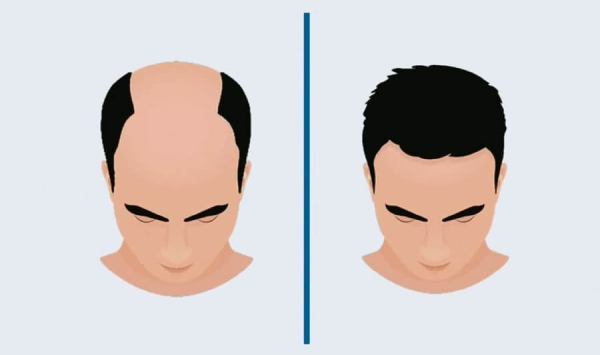Mon-Sat 10:00AM :03:00PM
+91 8851958874
ankitashu5@gmail.com
Hair Transplant

A hair transplant is a surgical procedure that involves moving hair follicles from one part of the body (usually the back or sides of the scalp) to bald or thinning areas. This procedure is commonly used to treat male pattern baldness but can also address hair loss in women and other areas such as eyebrows or beard.
Symptoms/Indications
- Male or female pattern baldness
- Thinning hair or hair loss due to genetics, aging, hormonal changes, or medical conditions
- Receding hairline
- Loss of hair volume and density
- Scars from injuries or surgeries that prevent hair growth
- Desire to improve facial hair density (eyebrows, beard, mustache)
Treatments
-
Follicular Unit Transplantation (FUT):
- A strip of scalp is removed from the donor area (usually the back of the head).
- The strip is dissected into individual follicular units under a microscope.
- Follicular units are transplanted into the recipient area in a natural pattern.
- Suitable for covering large bald areas and achieving higher hair density.
-
Follicular Unit Extraction (FUE):
- Individual hair follicles are extracted directly from the donor area using a specialized punch tool.
- Follicular units are transplanted into the recipient area.
- Leaves tiny, virtually undetectable scars and has a faster recovery time.
- Suitable for patients who prefer a less invasive procedure or those with tight scalp skin.
-
Procedure
- Consultation : Comprehensive assessment with a qualified hair transplant surgeon to discuss hair loss patterns, goals, and expectations. The surgeon evaluates the donor area and determines the best technique for the patient.
- Preparation : The donor and recipient areas are marked, and the patient receives local anesthesia to numb the scalp.
- Extraction : In FUT, a strip of scalp is surgically removed. In FUE, individual follicles are extracted.
- Transplantation : Tiny incisions are made in the recipient area, and follicular units are carefully placed into these incisions to achieve a natural-looking result.
- Recovery : Mild discomfort, swelling, and redness in the donor and recipient areas are common. Patients are advised to follow post-operative care instructions, including avoiding strenuous activities and protecting the scalp from direct sunlight.
-
Results
- Natural-looking hair growth in the transplanted areas
- Restoration of hairline and increased hair density
- Permanent solution to hair loss as transplanted hair is resistant to balding
- Improved appearance and self-confidence
A hair transplant can significantly enhance one's appearance and self-esteem by restoring a fuller head of hair. It's essential to choose a skilled and experienced hair transplant surgeon to achieve the best results. Regular follow-ups ensure proper healing and monitor hair growth progress.
Copyright © . Dr. Ankit S. Sharma All right reserved.

